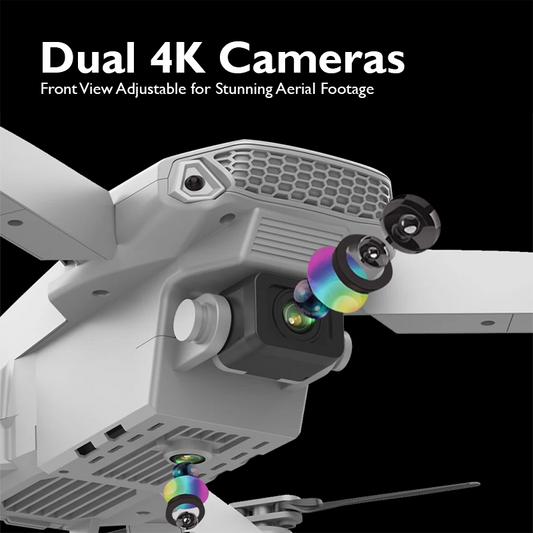The Best Practices for Nighttime Drone Surveillance

In the realm of modern security measures, nighttime drone surveillance has emerged as a powerful tool for monitoring and safeguarding various environments. Whether it's protecting critical infrastructure, securing large events, or aiding law enforcement efforts, the utilization of drones equipped with advanced technology offers unparalleled advantages. However, effective nighttime drone surveillance requires careful planning, execution, and adherence to best practices to ensure optimal results. In this article, we delve into the essential guidelines for maximizing the efficacy of nighttime drone surveillance operations.
Understanding the Importance of Nighttime Drone Surveillance

Nighttime surveillance presents unique challenges compared to daytime operations. The cover of darkness can provide opportunities for illicit activities to occur undetected, making it imperative to maintain constant vigilance. Nighttime drone surveillance fills this crucial gap by offering enhanced visibility and monitoring capabilities during low-light conditions. By leveraging infrared technology, thermal imaging, and other specialized equipment, drones can detect heat signatures, track movements, and identify potential threats with precision, even in the absence of natural light.
1.Selecting the Right Equipment

The foundation of successful nighttime drone surveillance lies in choosing the appropriate equipment tailored to the specific operational requirements. Opt for drones equipped with high-resolution cameras capable of capturing clear images and videos in low-light environments. Thermal imaging cameras are particularly valuable for detecting heat signatures emitted by objects and individuals, allowing for effective surveillance regardless of ambient lighting conditions. Additionally, ensure that the drone's payload capacity and battery life align with the intended duration and scope of the surveillance mission.
2.Conducting Thorough Pre-Mission Planning

Effective nighttime surveillance begins with meticulous pre-mission planning to identify objectives, assess risks, and determine optimal flight paths. Conduct a comprehensive reconnaissance of the area to be surveilled, taking note of potential obstacles, restricted zones, and environmental factors that may impact drone operations. Establish communication protocols and contingency plans to address unforeseen circumstances such as equipment malfunctions or inclement weather. Furthermore, obtain any necessary permits or permissions required for conducting drone surveillance in the designated area.
3.Implementing Flight Safety Protocols

Safety should always remain a top priority when conducting nighttime drone surveillance operations. Prioritize adherence to regulatory guidelines and best practices established by aviation authorities to minimize the risk of accidents or unauthorized intrusions. Perform pre-flight checks to verify the drone's functionality, including battery levels, GPS signal strength, and sensor calibration. Maintain situational awareness throughout the mission and be prepared to adjust flight parameters in response to changing conditions or emerging threats.
4.Leveraging Advanced Sensor Technologies

Maximize the effectiveness of nighttime drone surveillance by leveraging advanced sensor technologies tailored to enhance detection capabilities. Infrared cameras can detect heat signatures emitted by objects or individuals, allowing for reliable identification even in total darkness. Thermal imaging sensors enable operators to differentiate between various heat sources, facilitating the detection of anomalies or potential security breaches. By integrating these sensor technologies into drone systems, security personnel can maintain heightened vigilance and respond promptly to emerging threats.
5.Utilizing Intelligent Flight Software

Invest in intelligent flight software equipped with features designed to optimize nighttime surveillance operations. Autonomous flight modes such as waypoint navigation and orbiting allow drones to maintain steady surveillance patterns without constant manual input from operators. Real-time streaming capabilities enable live monitoring of surveillance feeds, allowing for immediate analysis and response to suspicious activities. Additionally, geo-fencing and altitude restrictions can help prevent unauthorized access to restricted airspace, ensuring compliance with regulatory requirements.
6.Implementing Data Encryption and Secure Communication
Protect sensitive surveillance data from interception or tampering by implementing robust encryption protocols and secure communication channels. Utilize encrypted transmission protocols to prevent unauthorized access to live video feeds and telemetry data transmitted from the drone to ground control stations. Secure storage solutions should be employed to safeguard recorded footage and mission logs against unauthorized access or tampering. By prioritizing data security measures, organizations can maintain the integrity and confidentiality of surveillance operations.
7.Conducting Post-Mission Analysis and Reporting

Upon completion of nighttime drone surveillance missions, conduct thorough post-mission analysis to evaluate performance, identify areas for improvement, and generate actionable insights. Review captured footage and sensor data to assess the effectiveness of surveillance techniques and detect any anomalies or security incidents. Document findings in comprehensive reports detailing observed activities, identified threats, and recommended courses of action. This information can inform future surveillance strategies and contribute to ongoing security efforts.
Nighttime drone surveillance represents a valuable asset in modern security operations, offering enhanced visibility and monitoring capabilities during low-light conditions. By adhering to best practices and leveraging advanced technologies, organizations can maximize the effectiveness of nighttime surveillance operations and mitigate security risks effectively. Through careful planning, execution, and continuous improvement, nighttime drone surveillance can contribute to safeguarding critical assets, protecting public safety, and deterring illicit activities in diverse environments.
Explore a variety of drones at our online drone store.Happy Flying!











